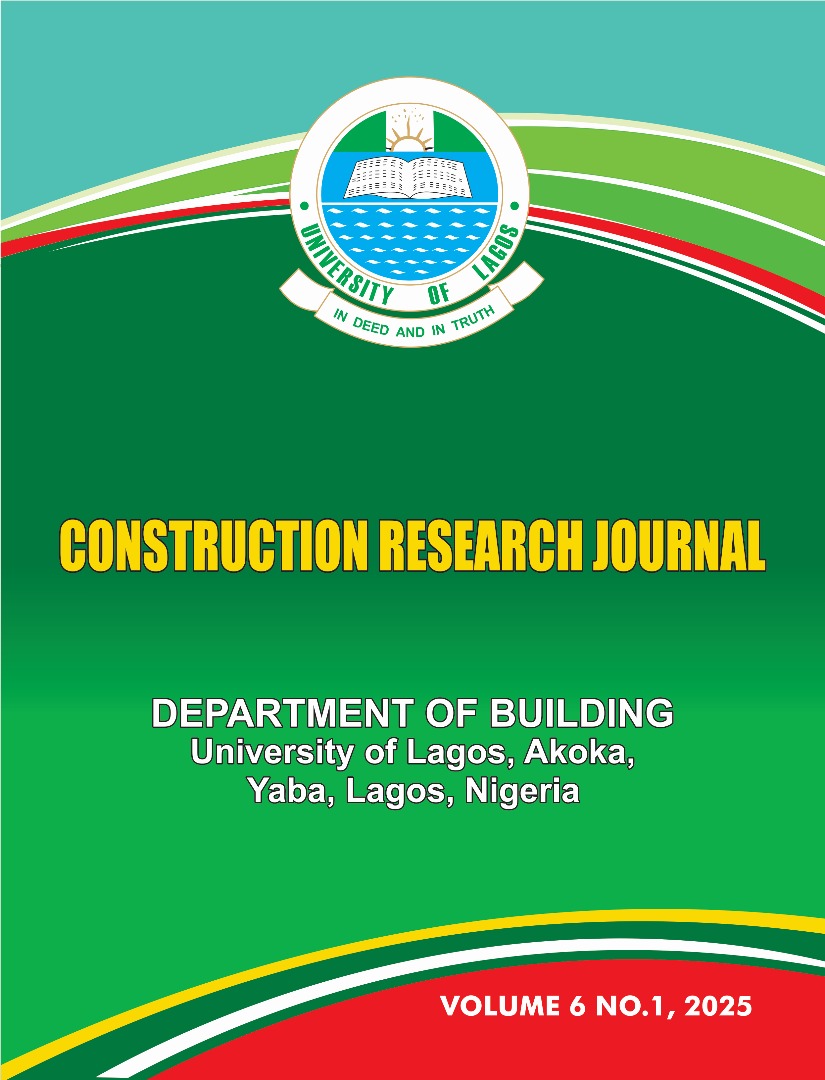INNOVATIVE TECHNOLOGIES FOR CONSTRUCTION HEALTH AND SAFETY ON CONSTRUCTION SITES IN LAGOS STATE: AWARENESS AND ADOPTION
Abstract
Purpose – Construction sites are accident-prone, and construction workers are vulnerable to accident or mishaps; hence, the need for interventions through the emerging technologies in construction health and safety (CHS) in Lagos, to enhance technological implementation to improve worker safety and operational efficiency on construction sites.
Methodology - The quantitative research approach was employed, focusing on gathering numerical data via structured questionnaires to analyze the level of awareness and adoption of innovative technology in CHS. Questionnaires were distributed to 200 construction professionals, including Builders, Civil engineers, Architects, H&S officers, and Quantity surveyors. The convenience sampling technique was utilized to ensure that the required sample was harnessed. The data was analyzed using descriptive and inferential statistics, the Relative Importance Index (RII) and Krustal-Wallis was used to assess the perceived importance of awareness and adoption levels of various innovative technologies.
Findings - Key findings reveal that Building Information Modeling (BIM) is the most widely recognized innovative technology in CHS, and that Drones and Artificial Intelligence (AI) have a moderate level of awareness among industry professionals; Whereas, awareness of 3D Printing, Internet of Things (IoT), Robotics, Wearable Technologies, Virtual Reality (VR), Mobile Applications, and Augmented Reality (AR) remains low, probably due to barriers such as high implementation costs, limited collaboration and communication among stakeholders, and limited access to training.
Research Limitation – The research was limited to Lagos, and did not secure enough evidence to generalize the findings.
Theoretical Implications – This study contributes to the body of knowledge on technology adoption in CHS, providing empirical evidence on the gaps between awareness and adoption. It underscores the need for tailored interventions and policies to promote technology integration. The research also hints on strategies for improving H&S outcomes, reducing accidents and promoting workers’ well-being.
Originality – The study concluded that a moderate negative relationship exists within the variables. This suggests that a high level of awareness of a technology does not necessarily correlate with its adoption.


